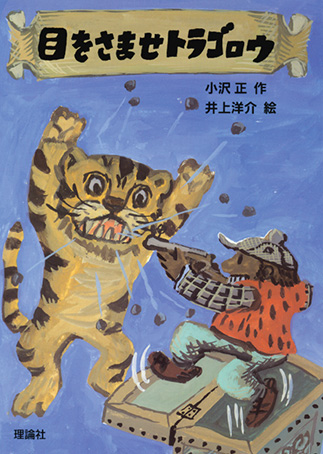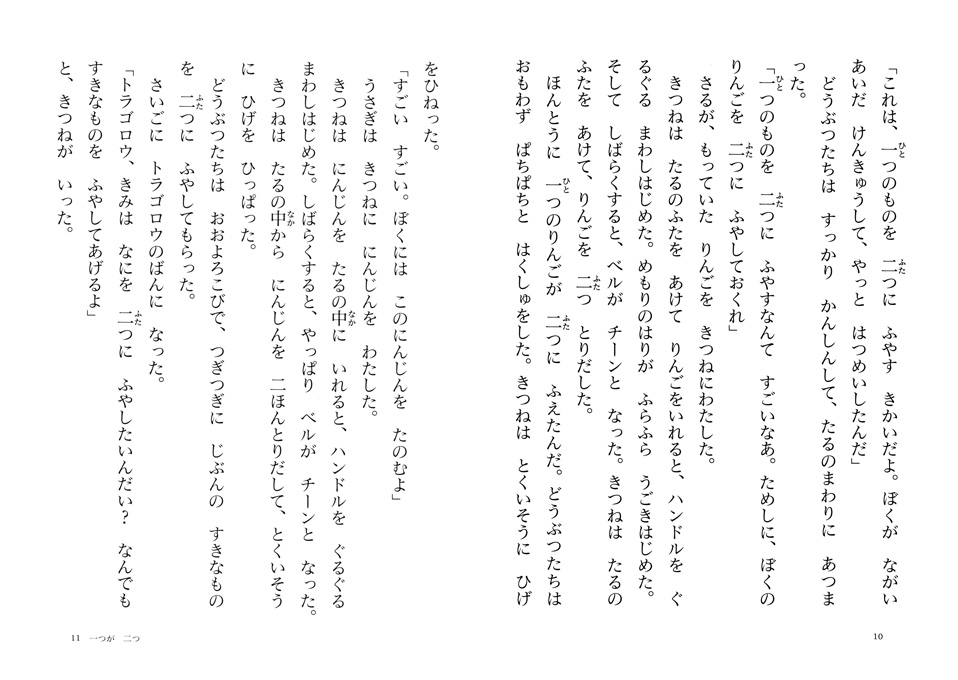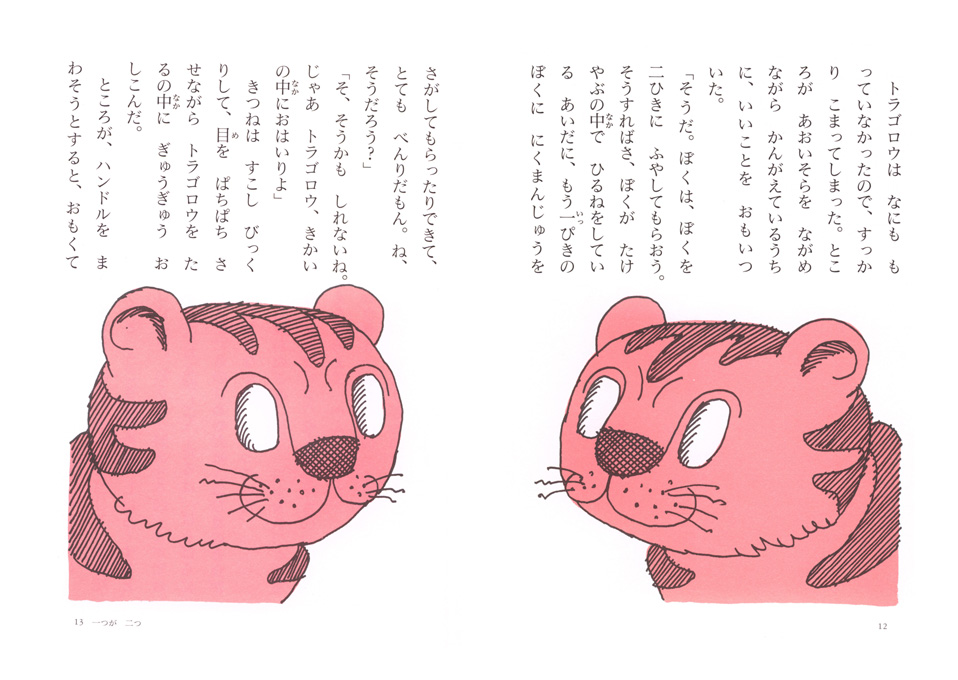This delightful book begins with a simple introduction: “In a bamboo grove lived a tiger named Torano Toragorō.” From there, the story unfolds into an eight-part narrative of Toragorō’s adventures. In the first chapter, “Hitotsu ga futatsu” [One Into Two], a fox invents a magical duplicating machine. A monkey uses this invention to turn one apple into two. A rabbit does the same with a carrot. Toragorō decides to create a double of himself, so that one of him can take a nap while the other goes in search of steamed meat buns. Things do not quite go as planned, however, as the two Toragorōs start to bicker over which one should nap and which one should work. This comical setback teaches Toragorō the valuable lesson that you cannot split yourself in two, setting the stage for the rest of the book.
Next comes “Kiba o nakusu to” [The Missing Fang], which begins with Toragorō setting off in search of one of his two fangs, which has gone missing. On the way, he meets a chicken who agrees to tell Toragorō where the fang is if he eats a worm. Despite his reluctance, Toragorō eventually works up the courage to try one. A pig then goads him into trying a rotten potato, while a sheep gets him to eat some dead grass. Finally, Toragorō meets a woodcutter and his wife, who make him eat soup so foul it brings tears of anguish to his eyes. After the last, bitter gulp, Toragorō sees his missing fang sitting at the bottom of the soup bowl. He puts the fang back in his mouth and, feeling mighty and powerful once more, immediately devours the woodcutter, his wife, and all the animals that worked their mean-spirited mischief on him.
Over the course of these fable-like episodes, the naive, innocent Toragorō overcomes his uncertainties and anxieties about who he is to develop a fuller sense of self. The book has garnered widespread acclaim over the years, with many calling it a masterpiece of children’s literature. (NA)
Next comes “Kiba o nakusu to” [The Missing Fang], which begins with Toragorō setting off in search of one of his two fangs, which has gone missing. On the way, he meets a chicken who agrees to tell Toragorō where the fang is if he eats a worm. Despite his reluctance, Toragorō eventually works up the courage to try one. A pig then goads him into trying a rotten potato, while a sheep gets him to eat some dead grass. Finally, Toragorō meets a woodcutter and his wife, who make him eat soup so foul it brings tears of anguish to his eyes. After the last, bitter gulp, Toragorō sees his missing fang sitting at the bottom of the soup bowl. He puts the fang back in his mouth and, feeling mighty and powerful once more, immediately devours the woodcutter, his wife, and all the animals that worked their mean-spirited mischief on him.
Over the course of these fable-like episodes, the naive, innocent Toragorō overcomes his uncertainties and anxieties about who he is to develop a fuller sense of self. The book has garnered widespread acclaim over the years, with many calling it a masterpiece of children’s literature. (NA)






